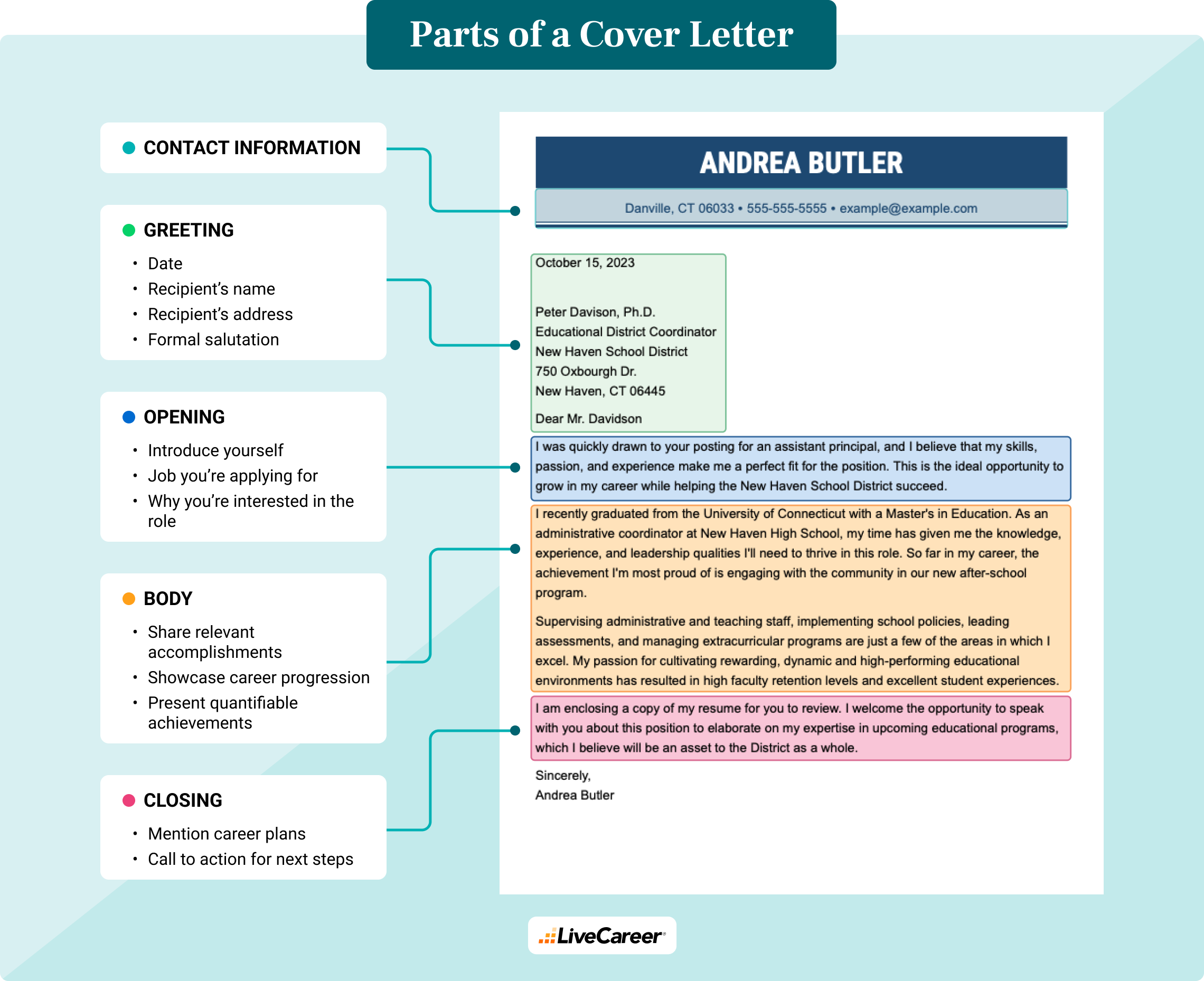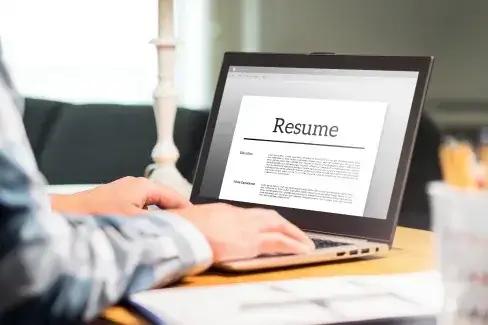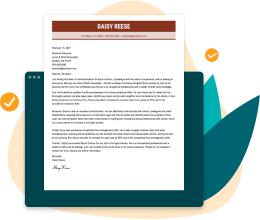What to Include in a Cover Letter in 2025 Examples
Ready to apply for a job, but need a stellar cover letter to accompany your resume? No problem. Our cover letter examples and guide will show you the sections to include in a cover letter, plus extra tips for making your letter shine!
Sections to include in a cover letter: example
Reference this cover letter example to get an idea of what to include in a cover letter for a job, what each section entails, and how they’ll all look together on the final page.
If you like how this cover letter looks, you can easily get one tailored to your desired job and unique abilities with little to no effort. Simply use our Cover Letter Generator and watch as it generates a personalized cover letter in minutes!
What to include in a cover letter
A cover letter should follow the business letter format and include five essential sections: your contact information, a formal greeting, an opening paragraph, a body paragraph(s) and a closing paragraph.
1. Contact information
This section is self-explanatory. At the top of your cover letter, you will include your contact details so recruiters can easily contact you when they want to schedule a job interview.
Your contact information should include:
- Your full name
- Your phone number
- Your email address
- Your location (city, state and ZIP code)
- LinkedIn, portfolio, professional social media accounts (optional)
2. Greeting
Your cover letter greeting is where you formally address your letter’s recipient, in this case, a recruiter, hiring manager or employer. You should include the following details in this exact order:
- The date
- The recipient’s name and job title
- The recipient’s address
- A formal greeting for the recipient (“Dear Ms. Jones”)
3. Opening paragraph
Introduce yourself to the potential employer in the opening paragraph of your cover letter. State your profession, current job title, the position you’re interested in, and your motivation for applying.
Here’s a template for cover letter opening paragraph:
4. Body paragraph
Your cover letter’s body paragraph should detail essential qualifications that make you an ideal candidate. Elaborate on your academic background, professional skills, and your most recent and relevant experiences.
Give specific examples of accomplishments, and avoid sounding generic. You should tailor your cover letter to show you meet the necessary qualifications.
Here’s a cover letter body paragraph example:
5. Closing paragraph
Your cover letter’s closing paragraph should finish with a brief statement of why you’re confident you can excel at the position. You should use this section to share your desire for a future job interview.
Here’s a template that will help you ace the cover letter’s closing paragraph:
That’s it! Writing a cover letter is pretty simple once you break it down into a few easy steps. However, if you can’t begin to imagine what skills and achievements to include in a cover letter, try our Cover Letter Generator. All you have to do is pick a template, answer a few questions, and type your desired job title, and you’ll get a unique cover letter in seconds!
Tips for writing a great cover letter
Understanding the contents of your letter is just the first step in writing a cover letter that wows recruiters. Follow these expert tips to ensure your cover letter meets recruiters’ standards.
Personalize your cover letter for each job application: Resist the urge to use a generic cover letter for every job application. Tailor your letter to each specific position and company by addressing the hiring manager by name and highlighting how your skills and experiences align with that job’s requirements.
- Optimize with keywords: Pay close attention to the keywords and phrases in the job description. Incorporating these keywords into your cover letter can help your application pass through applicant tracking systems (ATS) and demonstrate your suitability for the role.
- Highlight quantifiable achievements: The key to writing a cover letter is featuring accomplishments instead of responsibilities. Focus on showcasing your accomplishments with concrete numbers and metrics. Quantifiable achievements provide evidence of your capabilities and the value you can bring to the role.
- Keep it concise: Hiring managers often have limited time to review applications, so keep your cover letter brief and to the point. Aim for around three to four paragraphs, focusing on the most relevant information and avoiding unnecessary details.
- Proofread thoroughly: 76% of HR professionals would automatically reject a cover letter with a typo or grammatical error. Typos and other errors can detract from the professionalism of your cover letter and can leave a negative impression on potential employers. Take the time to proofread your letter carefully and check for spelling, grammar and formatting mistakes.
- Steer clear of negative topics: While it’s essential to be honest in your cover letter, avoid discussing negative or uncomfortable issues such as salary requirements, grievances with past employers or reasons for leaving previous positions. Maintain a positive and professional tone throughout.
- Use a professional template: A professional cover letter template can help ensure your document looks polished and well-organized. Choose a straightforward, simple design that complements your resume and reflects professionalism.
Cover letter examples
Draw inspiration from real-life cover letter examples for various career scenarios and job titles. Click on the button below your preferred cover letter sample and build your version in the Builder!
Intern
Teacher
Accountant
Career Change
Certified Nursing Assistant
Customer Service Representative
Entry-level
Social media manager
Internal promotion
Project Manager
Key takeaways
- A cover letter should include five key sections: contact information, greeting, opening paragraph, body paragraph and closing paragraph.
- Include basic contact details like your name, email, phone number and location so employers know how and when to reach you.
- Clearly state your credentials, the job you’re applying for and your motive for applying in the opening paragraph of your cover letter.
- Shows recruiters you have the skills, qualifications and certifications to thrive in the role by detailing specific achievements from past experiences.
- Finish your letter by summarizing why you’re the best candidate for the job and a call to action for a future interview.
- Always personalize your cover letter for each job application to ensure you mention the skills, experiences and qualifications the employer seeks.
- Boost your cover letter with quantifiable metrics that prove your impact and knowledge.
- Avoid uncomfortable topics like salary negotiations, bad experiences with previous supervisors or career failures. Your cover letter should be positive and inspire confidence in your abilities and professionalism.
- Finally, ensure your cover letter is free of grammatical errors and well-organized with a professional cover letter template.










